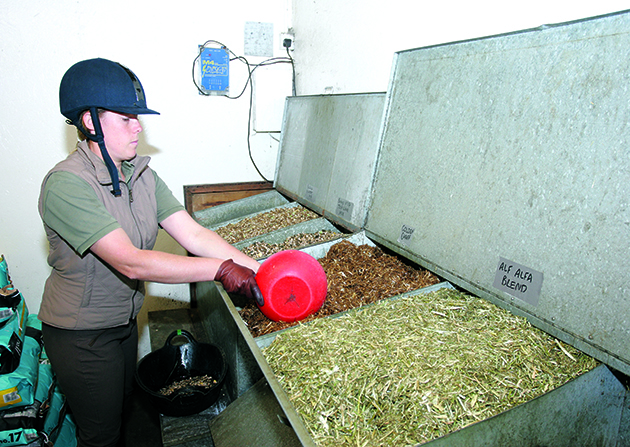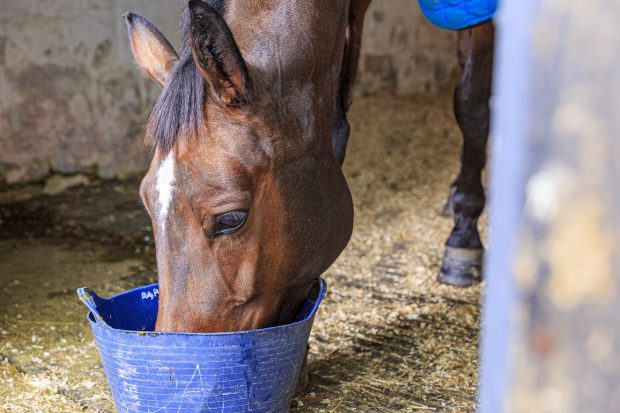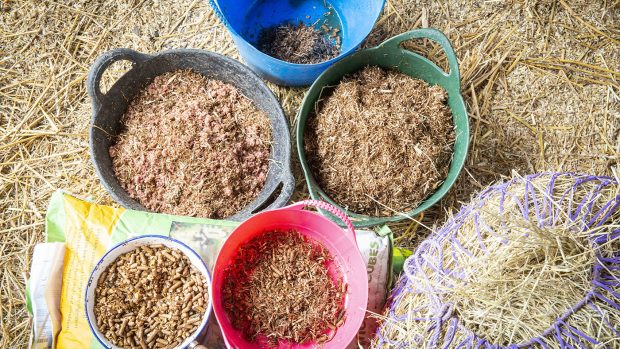Unrestricted water, fibre mats and adlib forage — Caroline Hughes MRCVS explains the science behind her three golden feeding rules, and why you must follow them in order to keep your horse happy and healthy…
1. Provide unrestricted access to water
- This is perhaps the most important rule of them all, because a horse’s body is approximately 80% water.
- Horses should drink around 50ml per kg in 24 hours — that’s about 25 litres a day for an average 500kg horse.
- Fluid demand rises if a horse has been sweating, is lactating or eats dry hay.
- Fresh grass contains moisture, so horses may appear to drink less after grazing.
- Signs of dehydration include dark urine that has a strong smell and dark pink/red gums that feel sticky and take more than two seconds to return to their normal colour after being pressed.
2. Feed before exercise
- The school of thought used to be that we shouldn’t feed a horse before they are worked but actually, due to the stomach’s sensitive lining, riding on an empty tummy is bad news.
- Stomach acid is produced in the lower (glandular) half of the stomach, which has a thick protective lining. However, the upper (non-glandular) part of the stomach does not.
- Therefore, an empty stomach results in acid splashing around and hitting the top of the stomach, risking ulceration and discomfort.
- Feeding at least a handful of chaff/hay prior to work provides a fibre mat to protect the stomach.
- Do not feed concentrates prior to exercise, however, due to the risk of colic.
3. Feed adlib forage
- Horses are designed to be continuous grazers and, as herbivores, require a high-fibre diet.
- Those that live out 24/7 spend 75% of their time eating, which equates to 18 hours a day.
- When stabled, small-hole haynets can prolong eating time to avoid long periods without food.
- Providing two sources of forage — perhaps hay on the floor and a haynet — solves the problem of not restricting forage intake while ensuring their supply lasts for longer.
- Horses are hindgut fermenters, as their hindgut is key to digestion. That is why their diets should be at least 50% good quality roughage.
- Long fibre also encourages chewing, which in turn creates saliva. Saliva is important for digestion and is also a natural pH buffer to stomach acid.
You might also be interested in:
Top riders and H&H readers share their tips for coping through the winter months — from exercising horses in the

Pot Noodles, tennis balls in troughs and other winter survival tips

Subscribe to Horse & Hound this spring for great savings
Horse & Hound magazine, out every Thursday, is packed with all the latest news and reports, as well as interviews, specials, nostalgia, vet and training advice. Find how you can enjoy the magazine delivered to your door every week, plus options to upgrade your subscription to access our online service that brings you breaking news and reports as well as other benefits.





